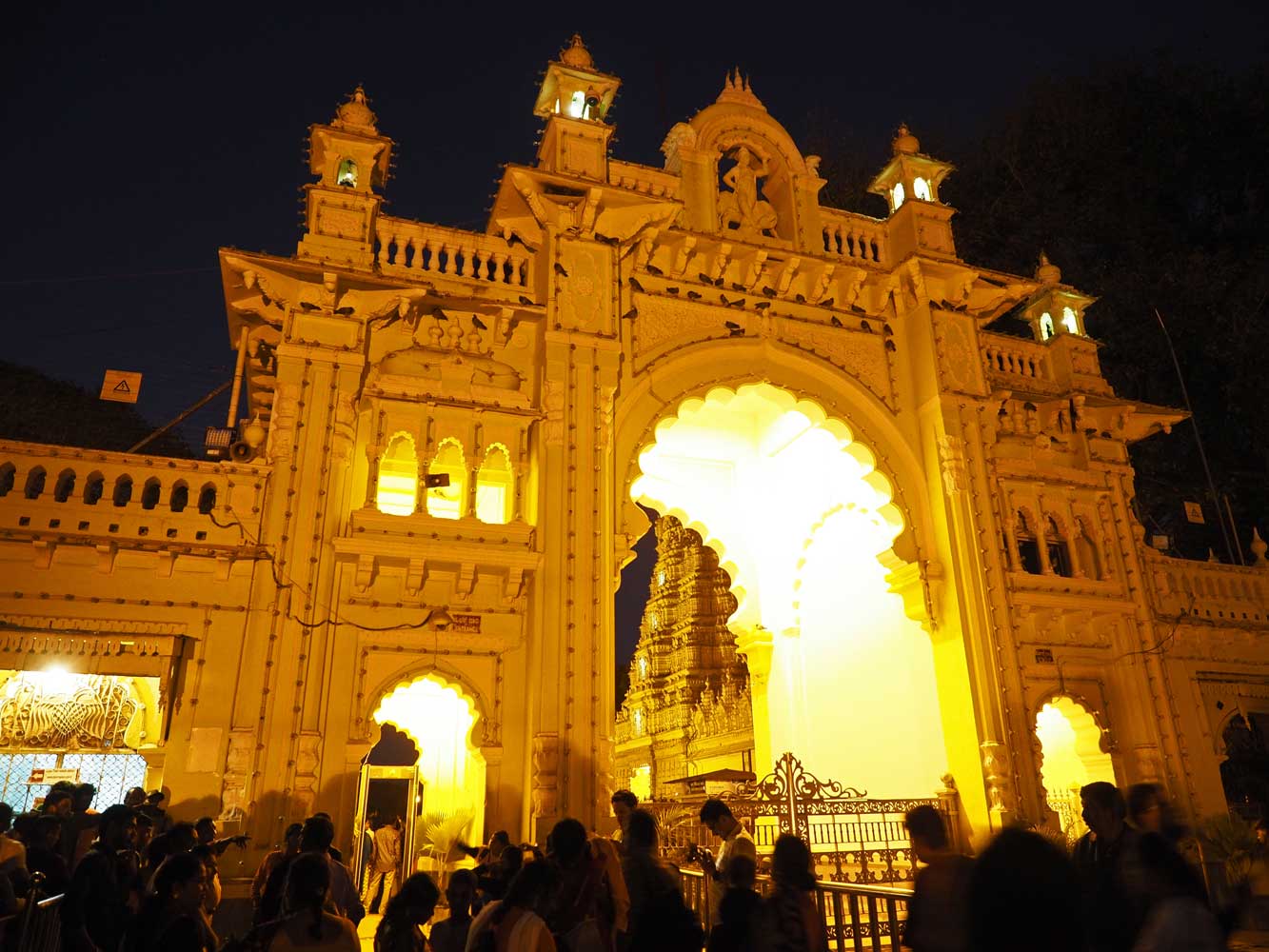
I arrive at the main south entrance gate of Mysore Palace to get my ticket for the Sound and Light Show.
16 January Mysuru (Mysore)
My Airbnb host had kindly offered to take me to
the train station despite the 6 a.m. departure time, and dropped me off 1½ hours
early, so I had time to relax and get a few snacks. I prefer taking daytime trains
if I have a choice, and the Shatabdi not only do that but provide the fastest times.
Aboard the train, staff served a small veggie breakfast and lunch as well as tea,
all included in the ticket price. I didn’t find the scenery impressive, just some
rocky hills about half way, before arrival at a convenient 1 p.m. A three-wheeler
taxi took me to my Airbnb place, Survarna Comforts, a small well-run hotel on a
side street just south of the Jaganmohan Palace. The hotel offered a 20% weekly
discount, so I reserved for seven days. Lots of hotels here have the word ‘Comforts’
in their name!
This is my second time to Mysuru, still known by its
old name Mysore. On New Year’s Day in 1984 I arrived for a visit on Bessie the Bicycle,
then wove north to visit many of Karnataka state’s ancient temples and monuments,
which made for a great bicycle ride. Now I’m roughly repeating the itinerary north
through the state, though to not to as many places.
I arrived in time
for a visit to the nearby 1861 Jaganmohan Palace, one of seven built during the
Wodeyar Dynasty and British rule. It’s now a museum and noted for a collection of
paintings by early Indian artists. Unfortunately one cannot take pictures inside.
The ground floor has a suitably grand reception room and galleries of sculptures
and paintings of the Wodeyar rulers and British officials. Upstairs I walked through
a long room with glittering chandeliers and elaborately carved wooden furniture,
then entered the paintings galleries with works by Raja Ravi Varma and other notable
artists. Lastly I climbed to the upper floor to a pair of painted galleries—the
highlight of the palace—with the first displaying musical instruments and the second
a wrap-around mural of a royal procession along with portraits and genealogies of
the Wodeyars.
I had dinner at Hotel Lok Sagar near my Airbnb, and although
the food was good, service tended to be erratic and I stopped going here after getting
shortchanged. Mostly I headed to Café Aramane, in a heritage building across from
the west side of Mysore Palace. The Veg Kitchen near my hotel was also good and
a bit more upscale. South Indian food in Mysuru is similar to that of Tamil Nadu
and largely vegetarian, but never rose to the heights that I had experienced in
Chennai.
17 January Mysuru (Mysore)
The wide sidewalk that runs
around the walled Mysore Palace compound makes for a pleasant walk. Grand heritage
buildings face the palace walls from across the street. I turned in at one of the
south gates, but the palace grounds on this Friday were packed with Indian visitors
and I decided to return on a quieter weekday to tour the palace interior. An English
architect designed the palace to replace a wooden structure on the site that burned
down after only a short period of use. The over-the-top Indo-Saracenic palace opened
in 1912, then later became a museum and one of India’s most popular destinations.
The huge grounds within the walls have at least eight Hindu temples surrounding
the palace, a big rose garden, and an expansive square in front of the palace. In
the evening I returned for the dramatic Sound and Light Show (English on Thurs.-Sat.
at 7 p.m.) for nearly an hour of mythology, history, and music as lights flashed
on and inside the front of the palace. After the show, a whopping 97,000 incandescent
light bulbs on the palace switched on for about 10 minutes in a dazzling display.
Palace hours are normally daily 10 a.m.-5:30 p.m. and the admission is only Rs.
70. You can get a preview and check opening hours and Sound and Light Show timings/languages
at www.mysorepalace.gov.in.

I arrive at the main south entrance gate of Mysore Palace to get my ticket for
the Sound and Light Show.
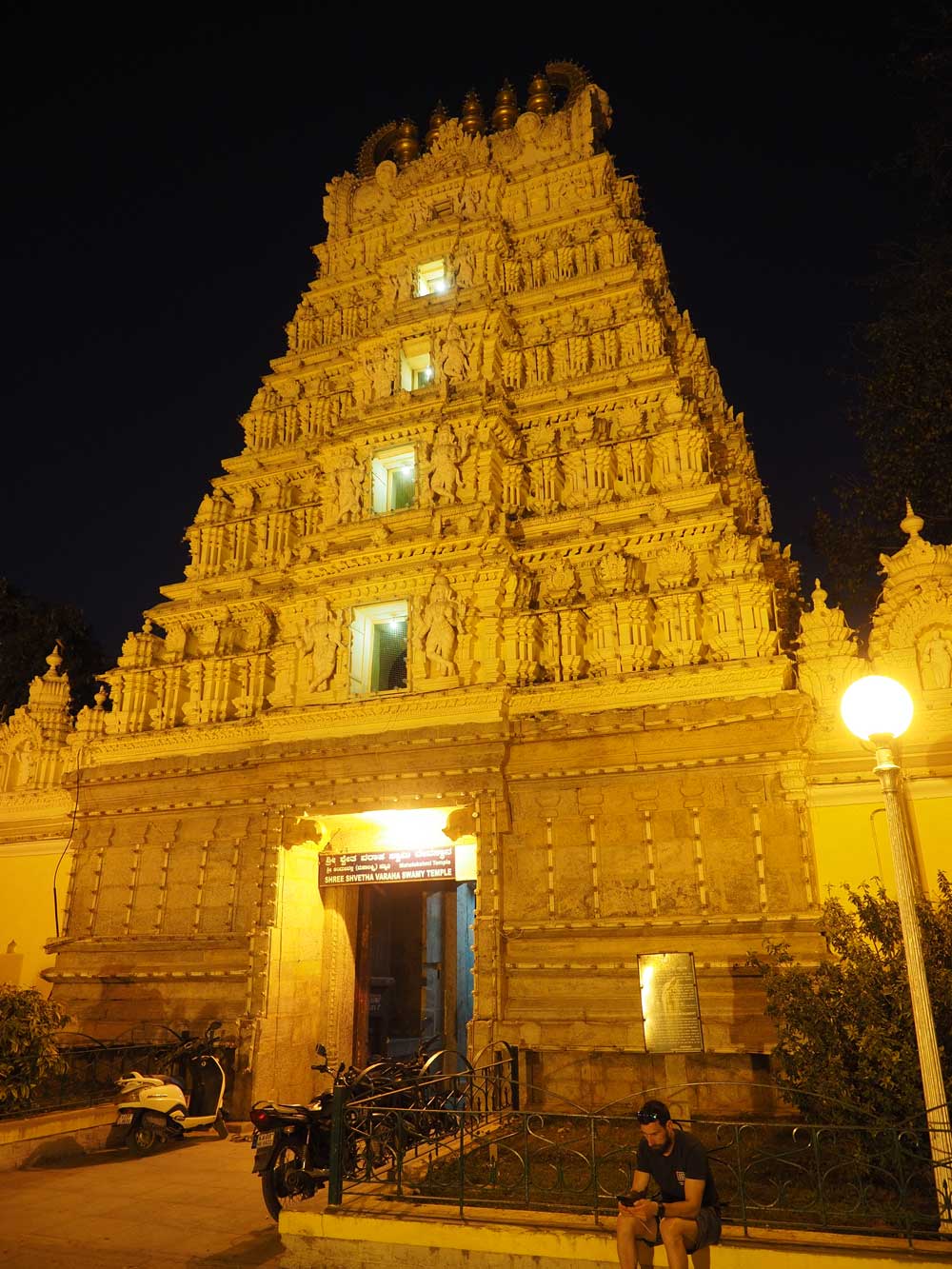
Shree Shvetha Varaha Swamy Temple, just inside the main south gate. (Varaha
is the wild boar incarnation of Vishnu.)
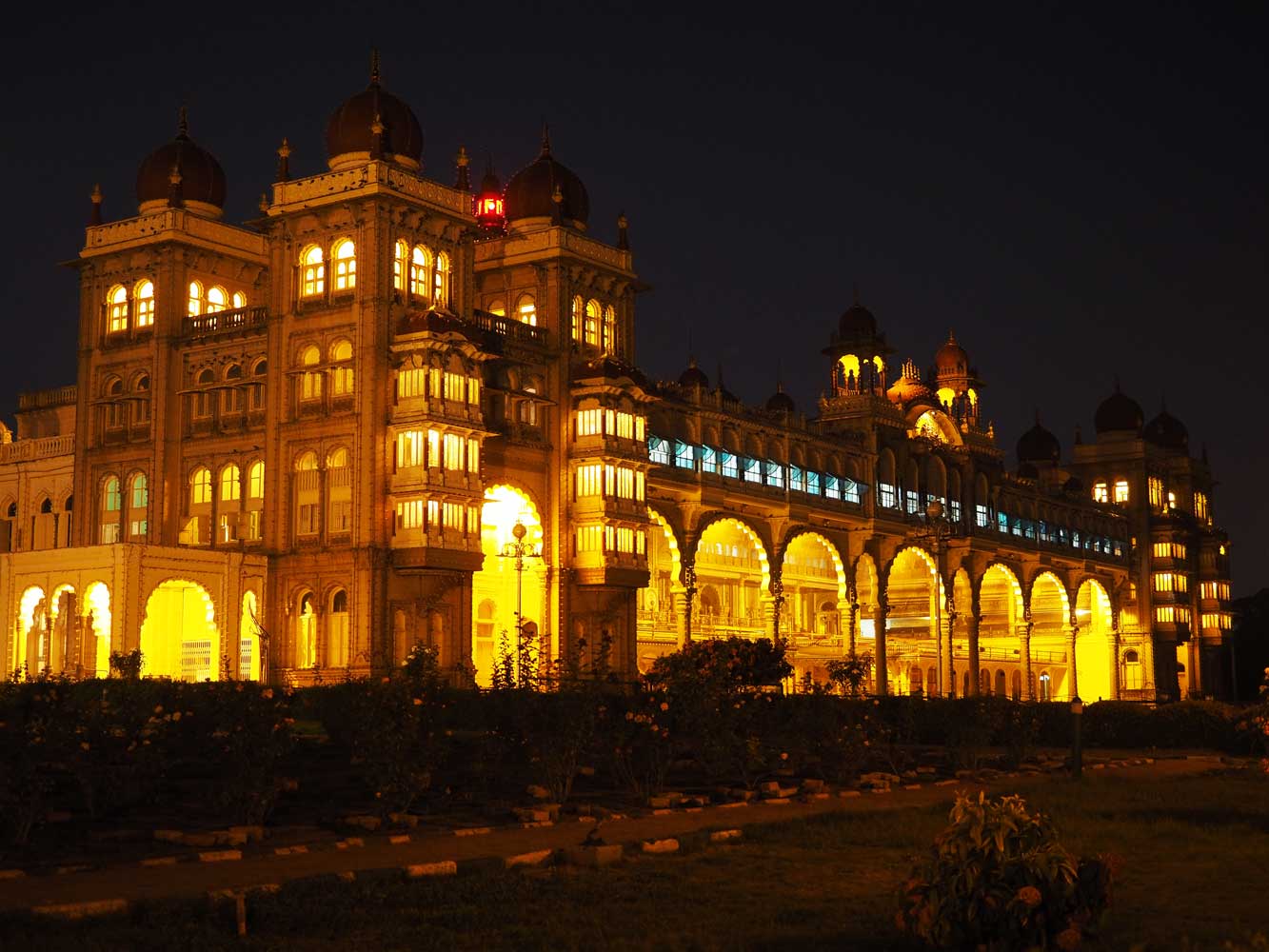
Interior lights radiate from Mysore Palace before the Sound and Light Show.

A scene during the Sound and Light Show
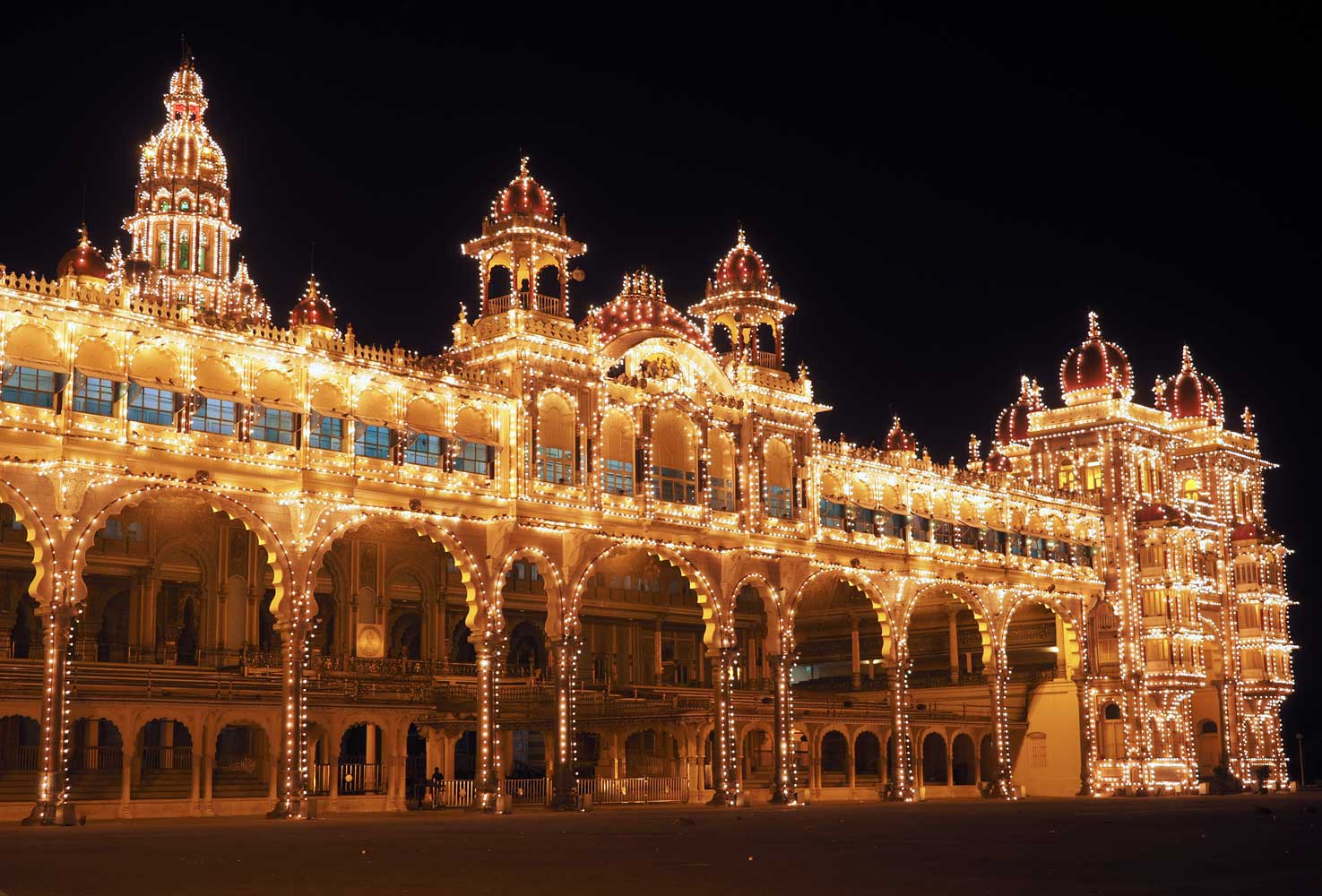
Light bulbs on the exterior blaze after the Sound and Light Show.
18 January Mysuru (Mysore)
I felt like going for a stroll, so in the morning
I caught a three-wheeler east beyond Mysore Palace to Sri Chamarajendra Zoological
Gardens, said to be one of India’s best zoos. Typically for Lonely Planet, my India
guidebook had no mention of the zoo. I arrived just before the 8:30 a.m. opening
time and got a Rs. 100 ticket for me and an Rs. 100 for my camera. Crowds soon appeared—not
surprising for a Saturday—though that wasn’t too much of a problem. The zoo has
a tree-shaded main path of about three kilometers that loops past all the main exhibits,
so the place is very easy to explore. I started with the birds, the vast majority
in large cages, but I felt sorry for the those in the cramped concrete-floored ‘heritage
structure.’ Hornbills, eagles, peacocks, golden pheasants, South American parrots,
and other famous feathered creatures flew and scampered about, though the parrots
ignored the ‘Be Quiet’ signs. Leopards, Bengal tigers, lions, and jaguars represented
the big cats. Africa’s ‘Big Five’ roamed their large pens as did Asia’s elephants,
southern white rhinos, and Indian rhinoceros. Lots of different kinds of deer and
antelope from India and beyond pranced about, while sloth bears and Asiatic black
bears shuffled around. Monkeys and apes played including Nilgiri langurs, lion-tailed
macaques, rhesus macaques, and chimpanzees. Several kinds of crocodiles sat motionless
and threatening beside their pools.

I followed the
heavy line in a clockwise direction with a few detours from the Entrance Plaza
at the lower left of the map.
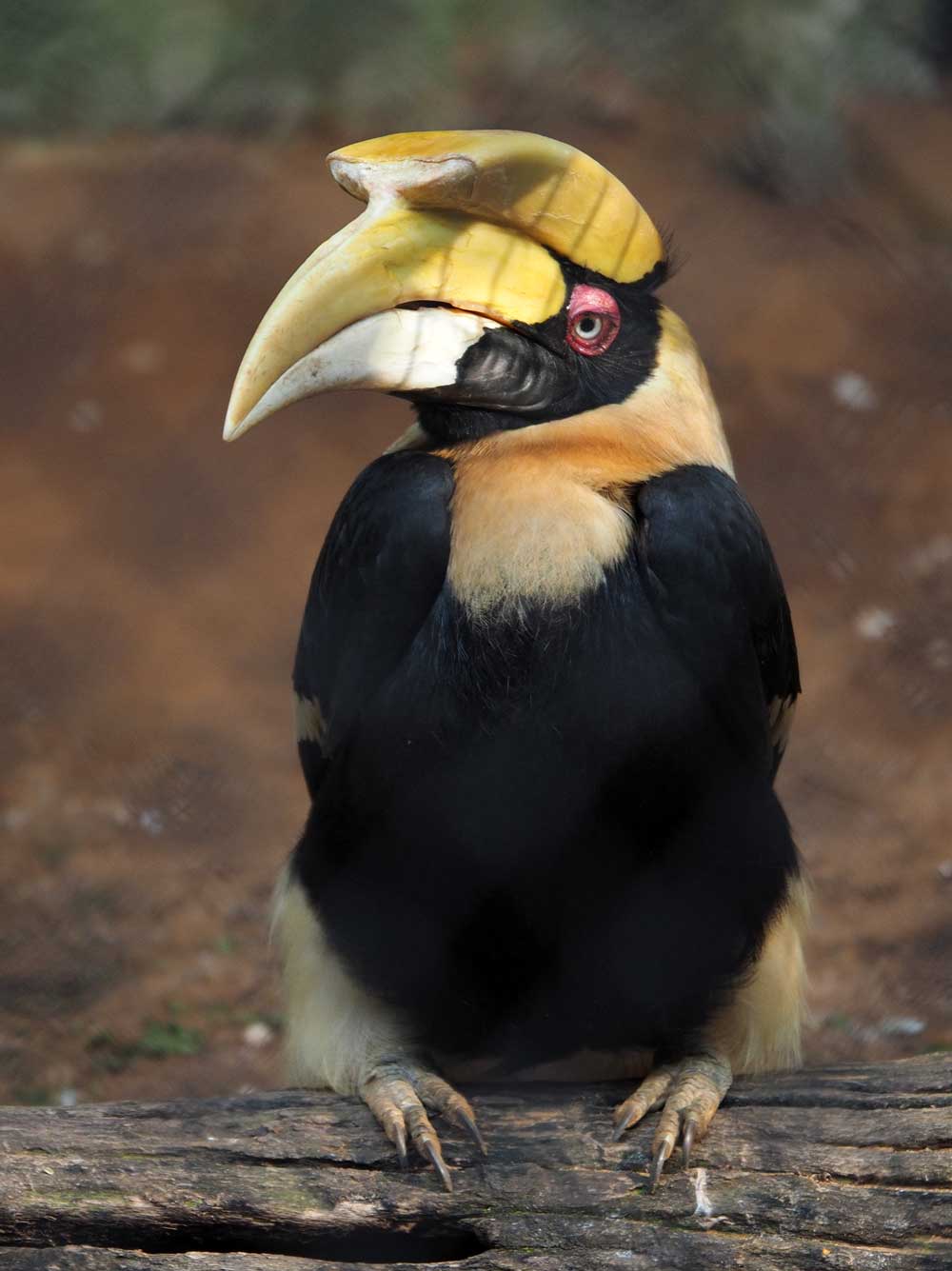
Great Indian hornbill (Buceros bicornis)

Sarus crane (Grus antigone)

Golden pheasant (Chrysolophus pictus)
This fellow rarely stood still!
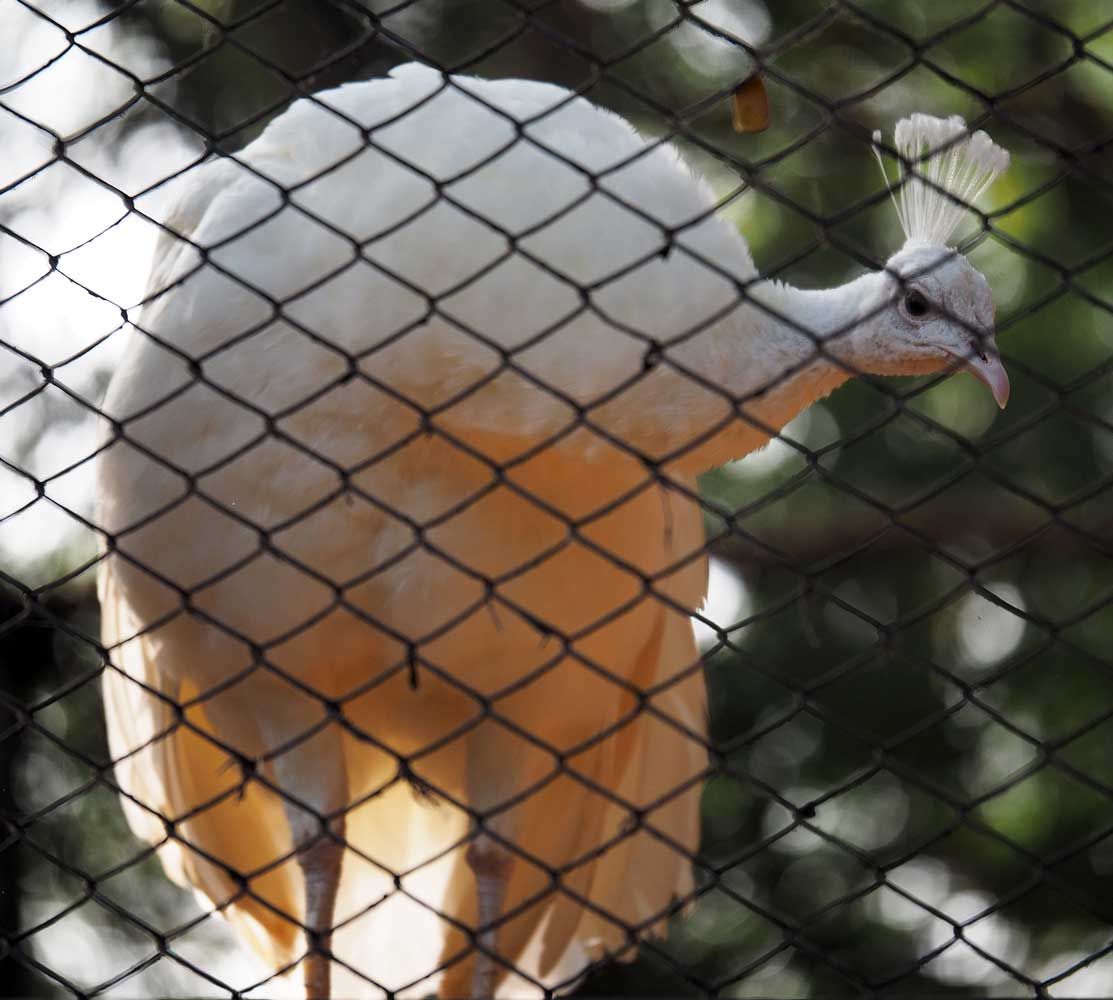
The white peacock is a rare form of the India blue peafowl (Pavo cristatus).
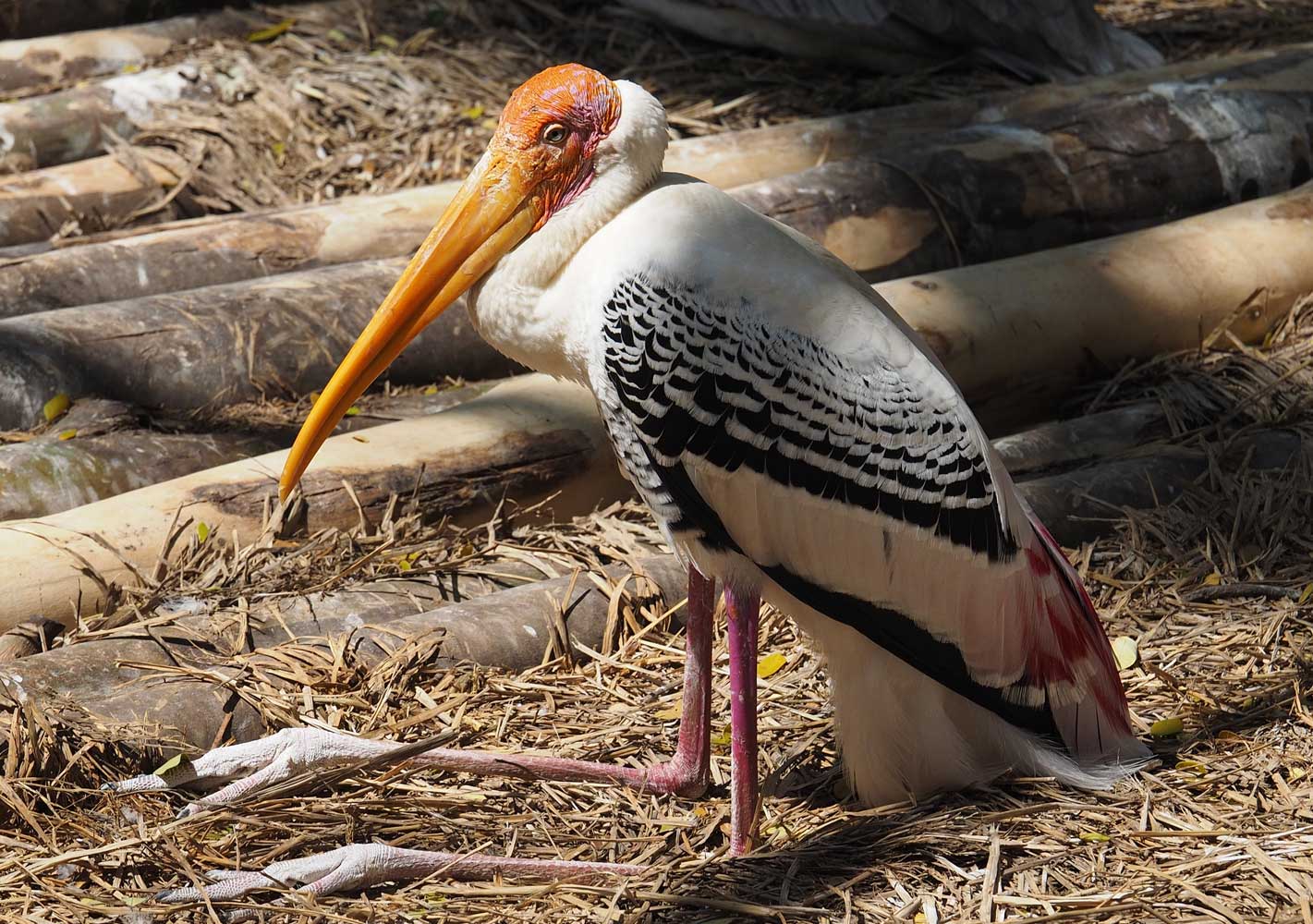
Painted stork (Mycteria leucocephala)
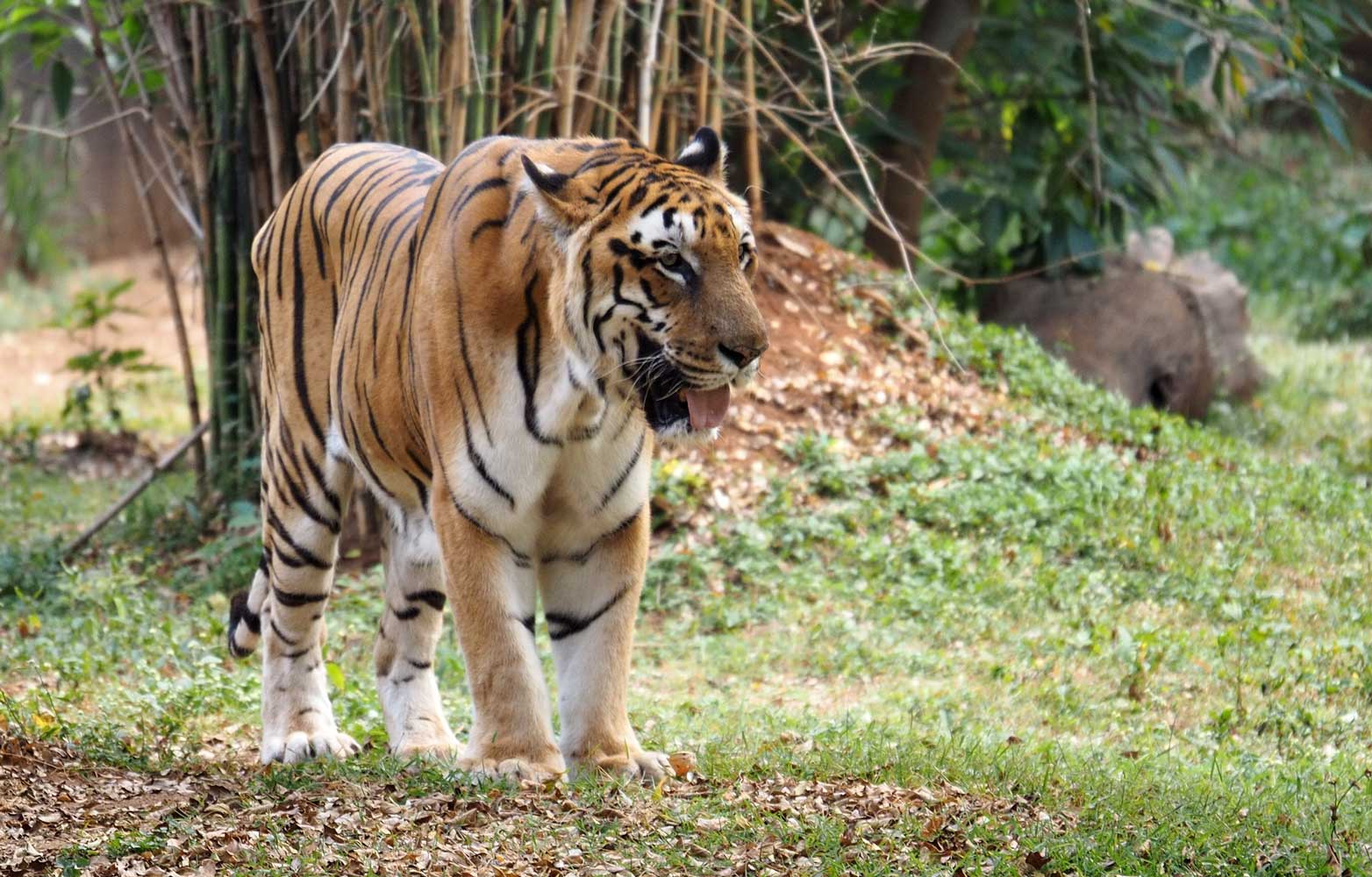
A Bengal tiger (Panthera tigris tigris) on the move

Beauty is in the eye of the beholder, it seems, for these Hamadryas baboons
(Papio hamadryas), native to the Horn of Africa and the southwestern tip
of the Arabian Peninsula. The swollen red bottom of a female baboon has long
been thought to be an irresistible come-hither signal for males. The
female baboon’s famously red bottomis a sign of sexual readiness; when
female baboons ovulate, their butts swell, making it clear to available males
that they are fertile. (www.livescience.com)
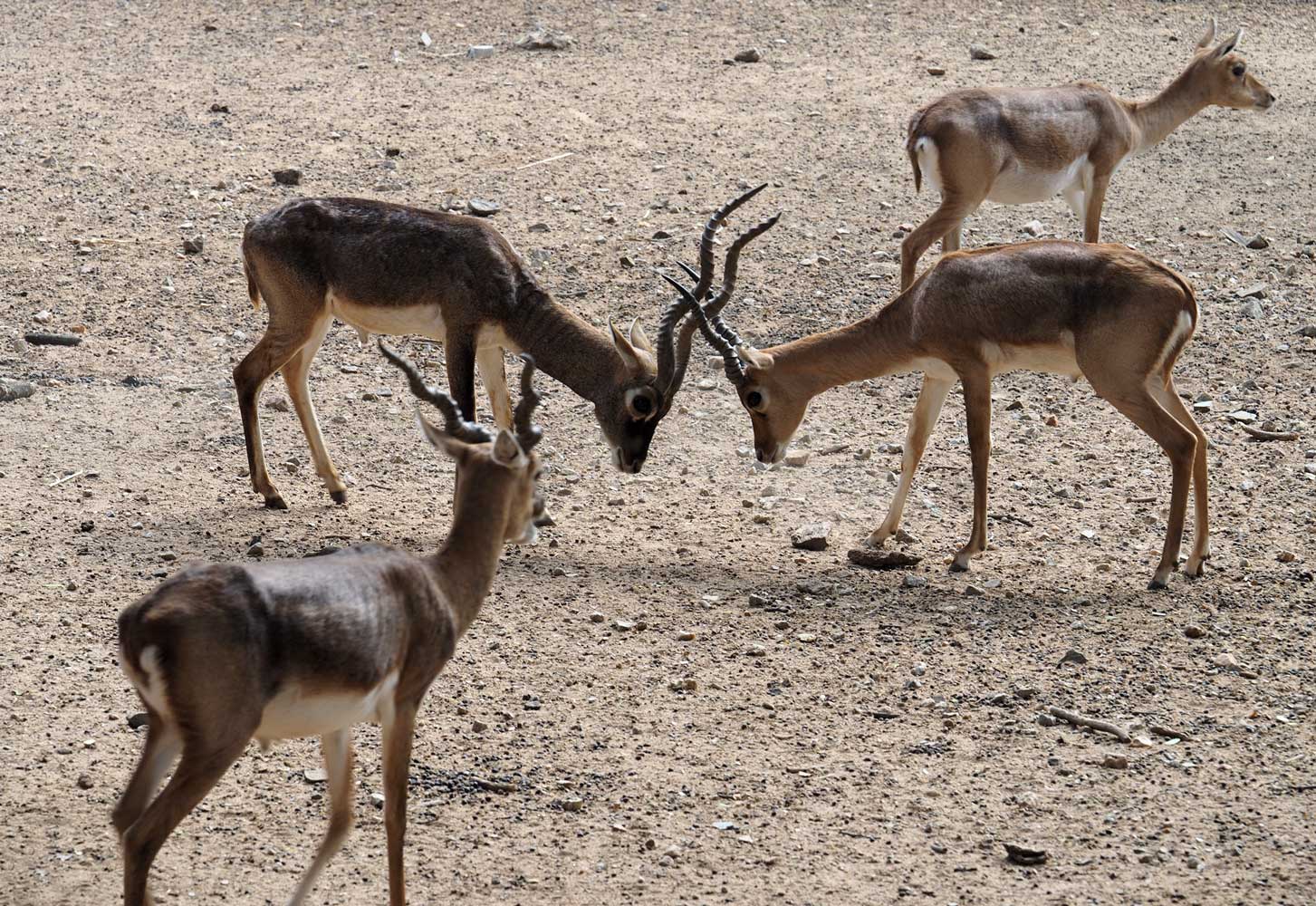
Black buck (Antilope cervicapra), also known as Indian antelope, roam
in India, Nepal, and Pakistan.
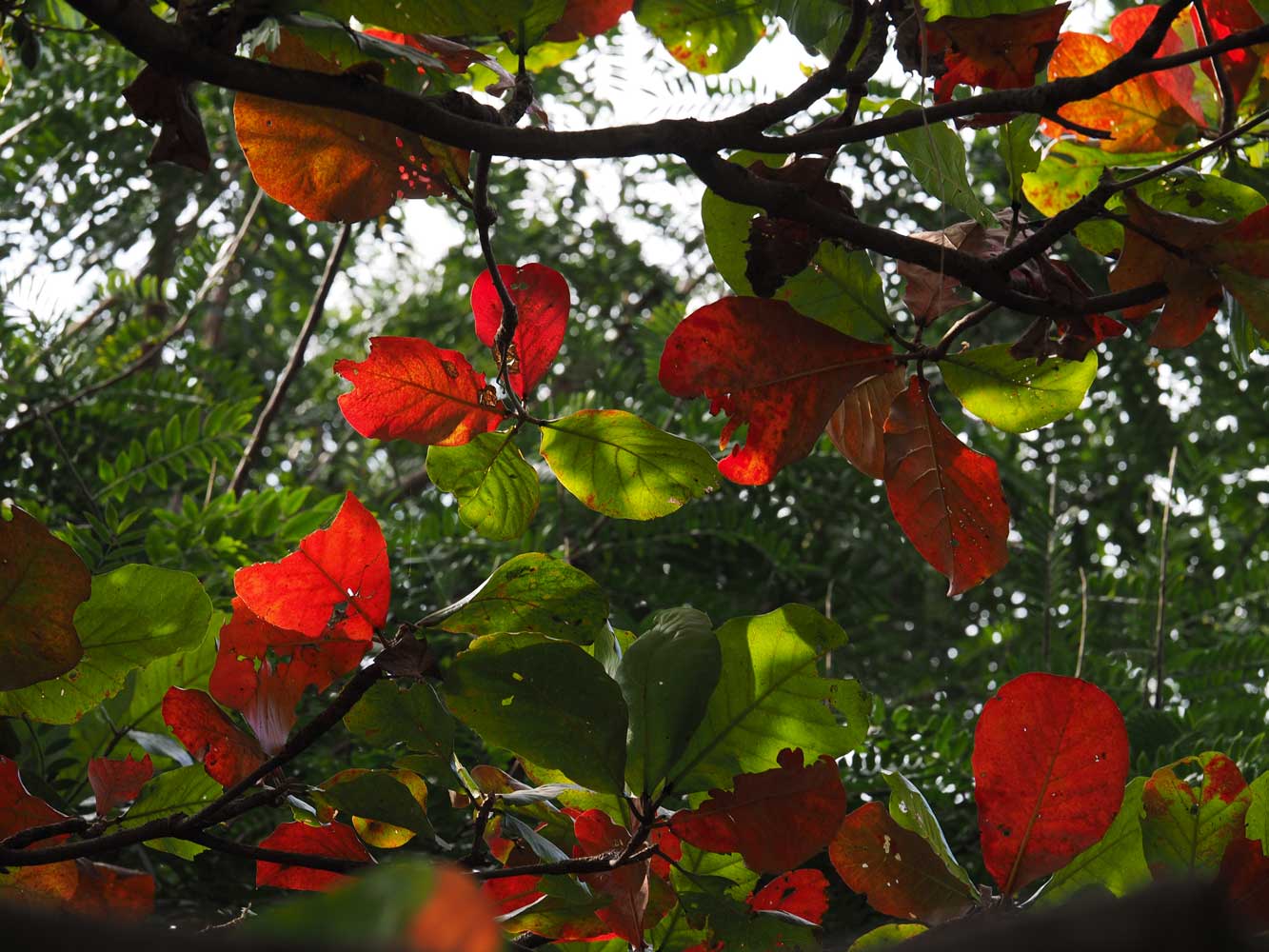
Colorful leaves above the trail; these may be of a teak tree.
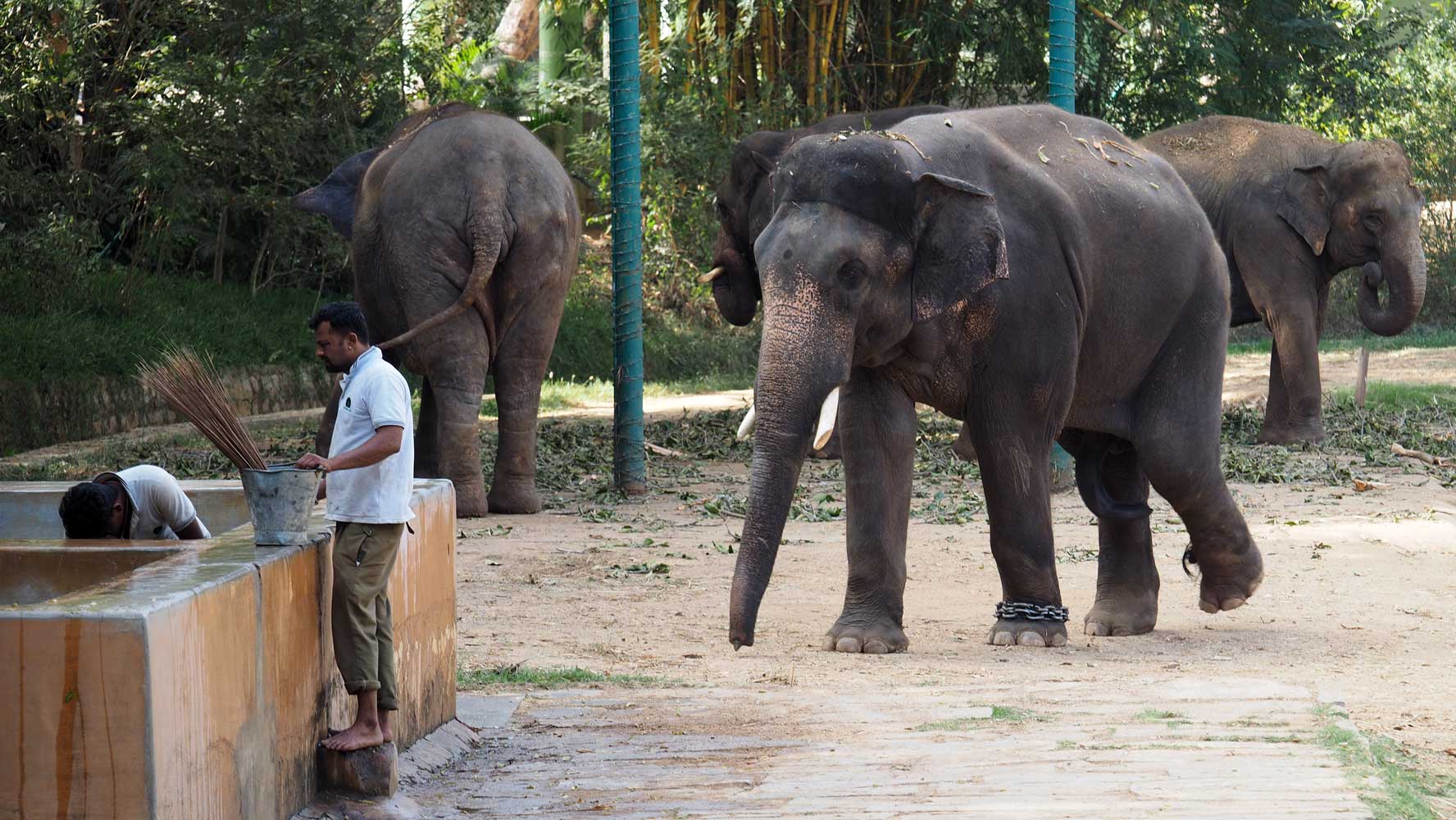
Asian elephants (Elephas maximus) can grow to 5,400 kilograms for the
males and 2,700 kilograms for the females.

An Asiatic black bear (Ursus thibetanus) peers into the outside world.
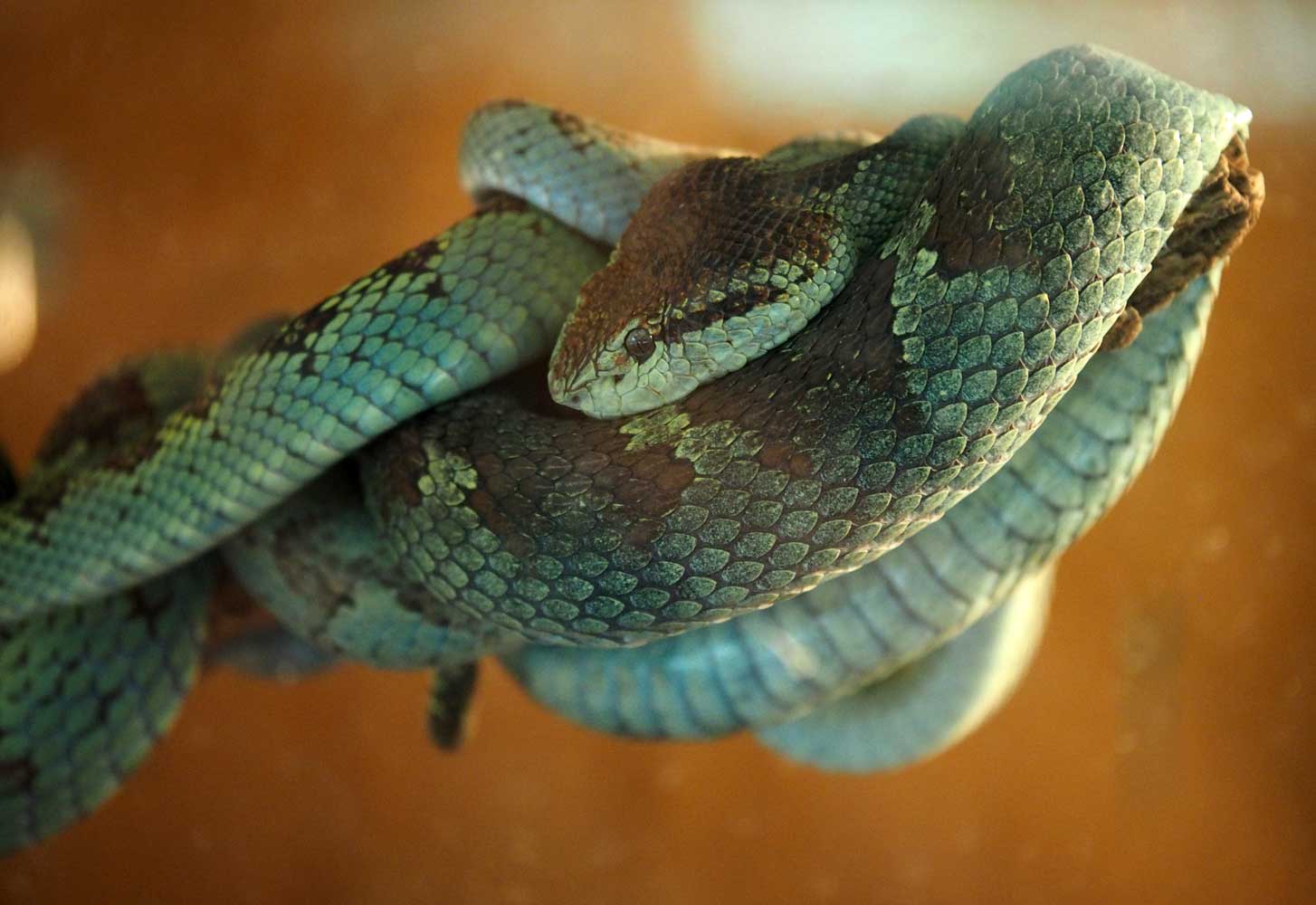
Malabar pit viper (Trimeresurus malabaricus) live in the Western Ghats
of southwestern India.
The venomous snake has a prehensile tail, is nocturnal,
and most commonly seen during the monsoon months.
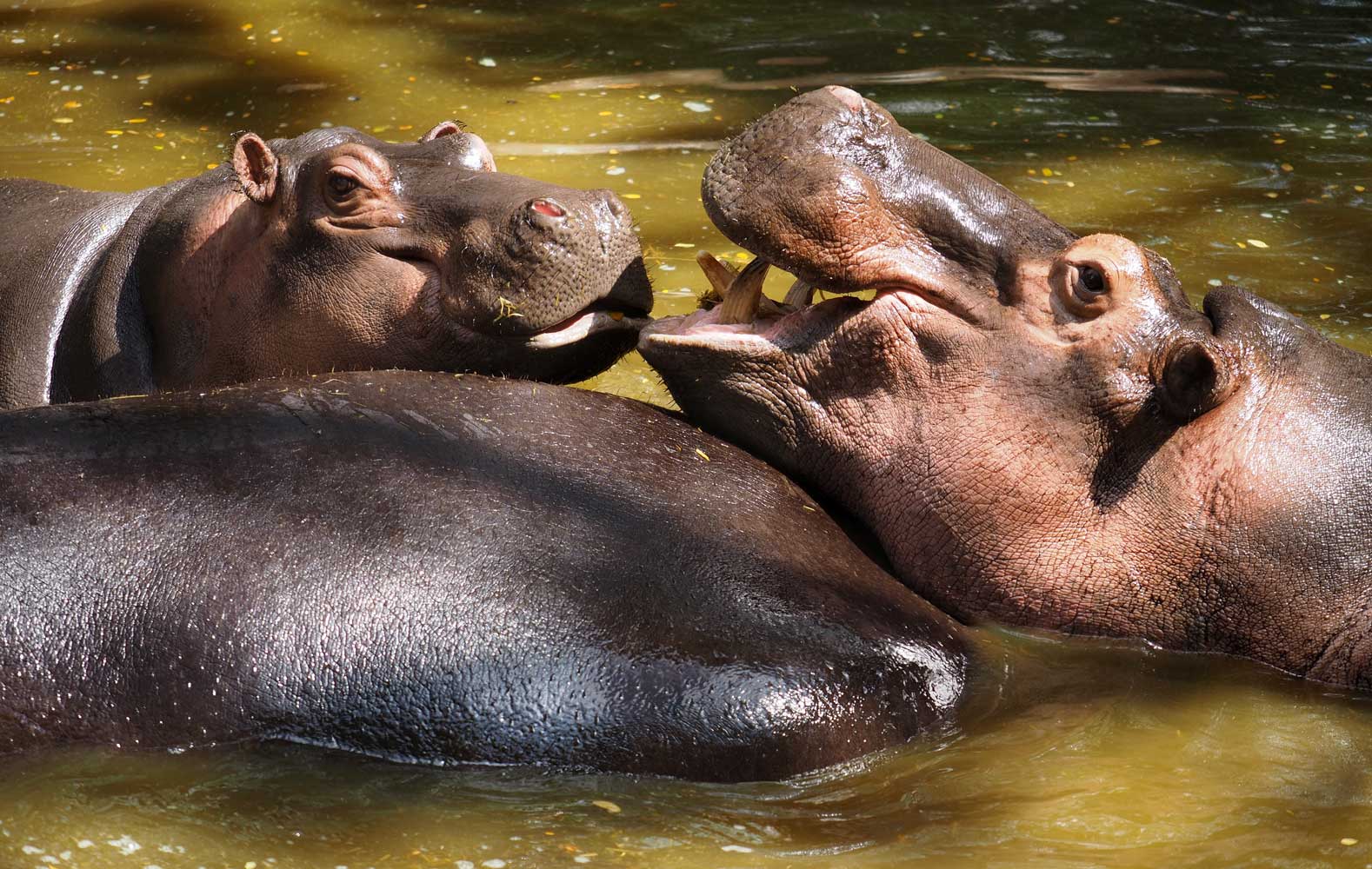
Hippopotamus (Hippopotamus amphibious) are native to west and east
central Africa.
Babies are born underwater and can swim at birth.
After about four hours of communing with the wildlife and taking many photos, I got a three-wheeler farther east to one of the city’s oddball sights, Melody World Wax Museum (Rs. 50 plus Rs. 10 camera fee). The large collection of musical instruments comes mostly from India, but those of other lands are represented too. Unconvincing ‘wax’ figures play their instruments in solo or regional groups.
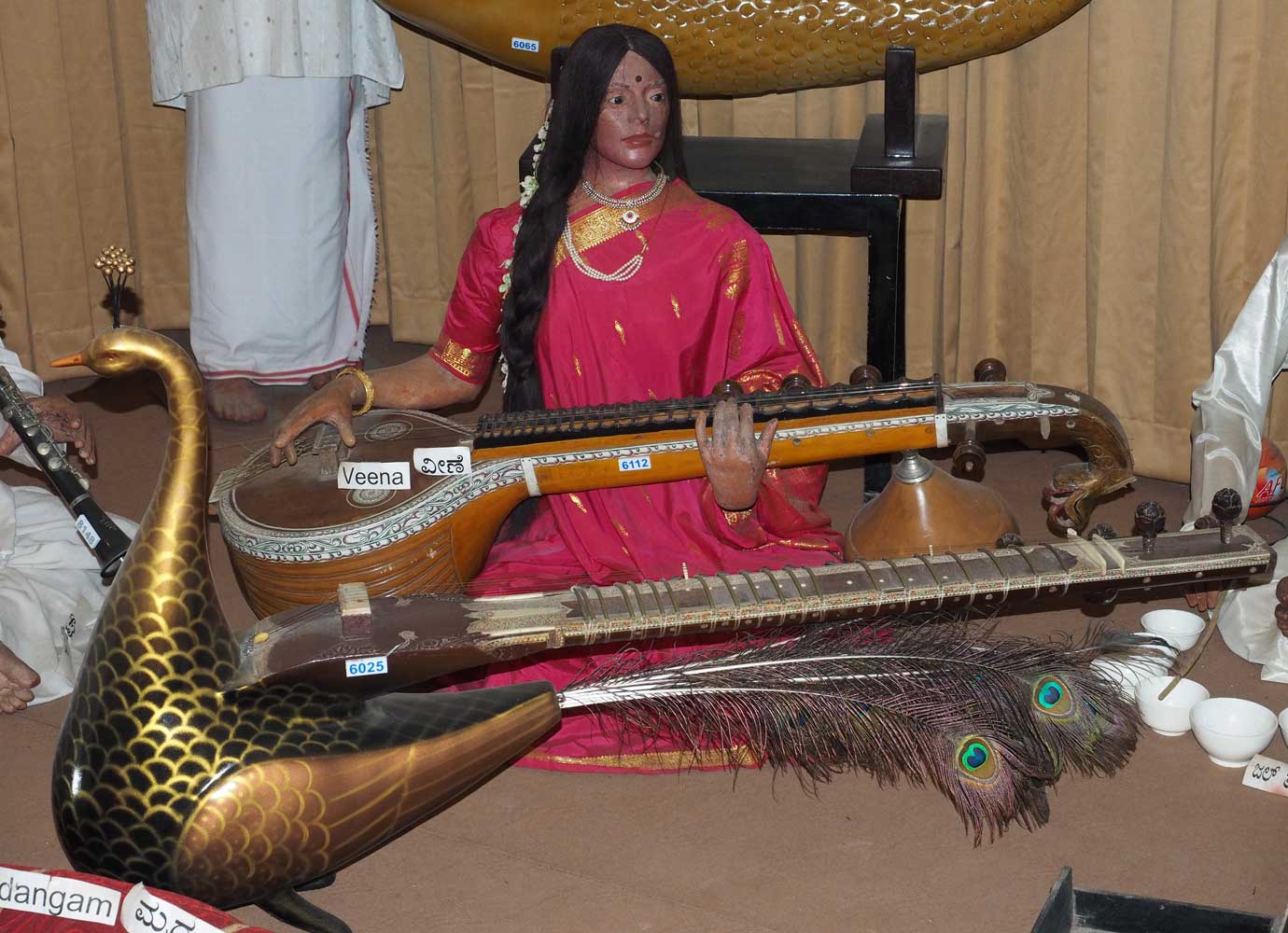
A veena player in a South Indian orchestra

Northeastern India musicians
A walk south brought me to the World’s First Guinness World Record Sea Shell Art Museum (Rs. 50), famed for several enormous works comprised of many thousands of seashells that depict St. Philomena’s Church, an elaborate statue of Ganesh, a Shiva temple, and the Taj Mahal. Small artwork of shells had a lot of creativity and beauty too.

I liked the seashell flowers!

The Guiness World Records Certificate on the wall proclaims “The largest seashell sculpture is 6.74 meters (22 ft., 1 in.) in the sum of all dimensions and was created by Radha Mallappa (India) in Mysore, Karnataka, India, on 18 March 2016.”

Smt. Radha Mallappa took seven years to finish the Shiva Temple, composed of
98 different types of seashells and weighs over 3,620 kilograms. The structure
stands 14 feet tall, 13 feet wide, and 13 feet deep.

Smt. Radha Mallappa built this replica of the Taj Mahal over a period of eight years.
The structure uses 42 different types of seashells, measures 9.5 feet high with
a breadth and width of 13 feet, and weighs 2,860 kilograms.
Continuing a bit farther south, I came to Mysore Sand Sculpture Museum (Rs. 40), created by the woman artist M.N. Gowri from 115 truckloads of sand to depict 16 themes with everything from depictions of epic Hindu myths to Santa Claus!

Royal procession
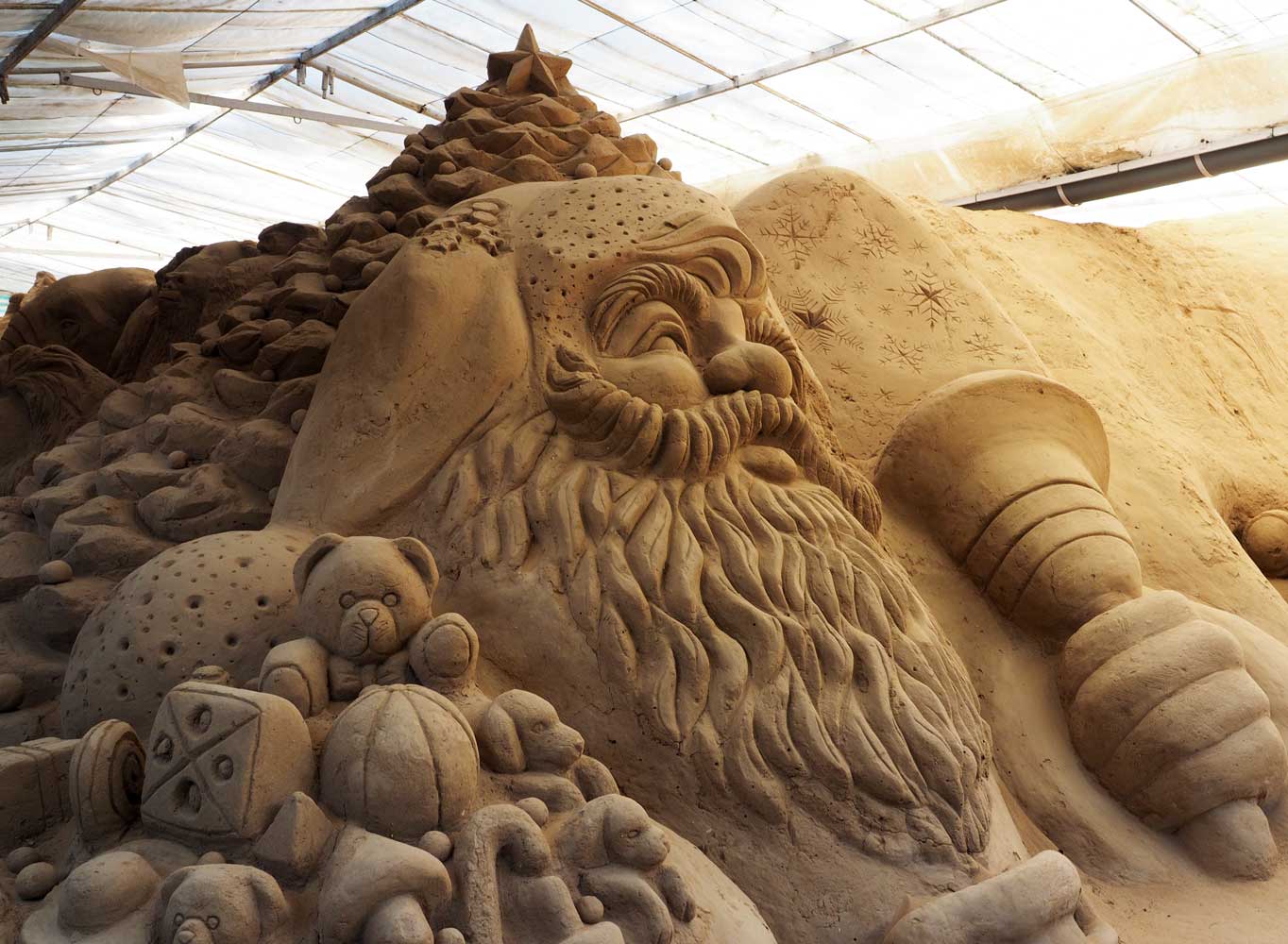
Old Saint Nick

Goddess Devi Chamundeshwari
On to Mysuru (Mysore)—Part 2
Back to beginning of “Backpacking 2020: India, Singapore, and Philippines”